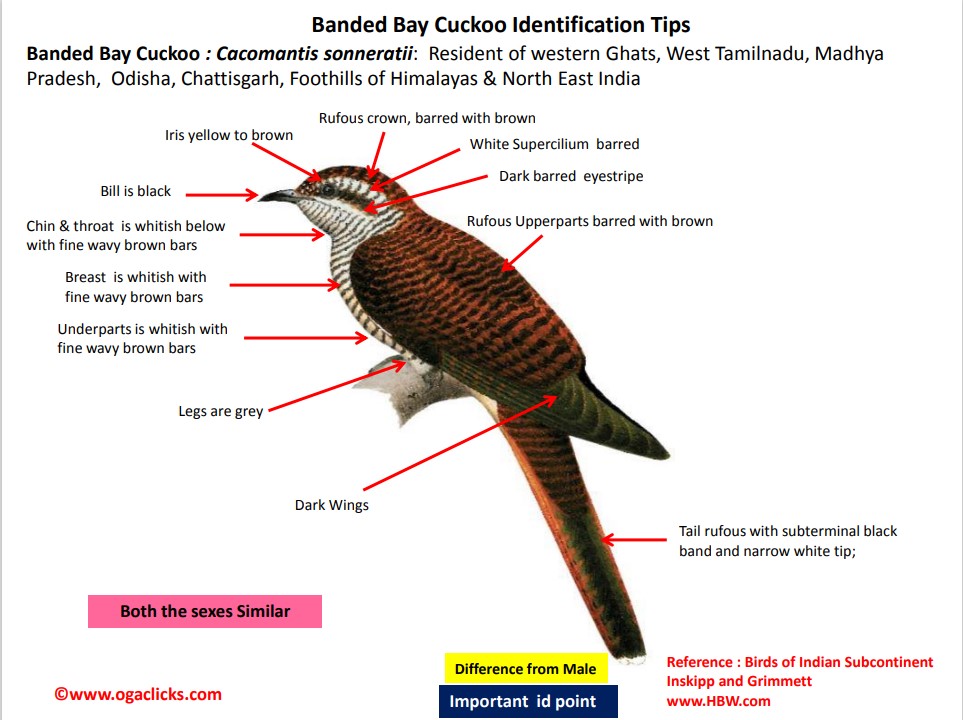
Banded Bay Cuckoo Cacomantis sonneratii
Etymology :
- Cacomantis : Greek word kakosill-boding; mantis prophet . {prophet of evil} . These cuckoos were regarded as prophets of doom by the superstitious Javanese becausethey were heard calling from burial grounds at night.
- Sonneratii : Named after French Naturalist Pierre Sonnerat (1748–1814)
Vernacular Names: Guj: Pattavali lal koyal, Nanikoyal, Ta: Kuyil, Te: Basha katti pitta, Mal: Chenkuyil, Sinh: Koha, Hindi: Pattedar Kuku, Mar: Pattedar Kokil
Distribution in India: Resident of Western Ghats, parts of Tamilnadu, Madhya Pradesh, Orrisa , Lower Himalayas and North east.
Description: Size of 22-24 cm. Adult is bright rufous or bay above, barred with brown, whitish Supercilium, white line under eye, tail rufous with subterminal black band and narrow white tip; whitish below with fine wavy brown bars, underside of flight-feathers pale rufous, whitish at base; iris yellow to brown, bill broad, black, feet grey.
Habitat: Found in Open or dense broadleaf forest, deciduous and evergreen, forest edge, secondary scrub, cultivated lands.
Food Habits: They Insects, caterpillars, bugs and grasshoppers.
Breeding Habits: They breed as per their chosen host between Feb-Aug. They are brood-parasitic and hosts include the Common Iora , Red-whiskered Bulbul, white-bellied Erpornis, Scarlet minivet, bulbuls and small babblers. The eggs resemble those of the hosts. Fledglings and eggs of the host are evicted by its chicks